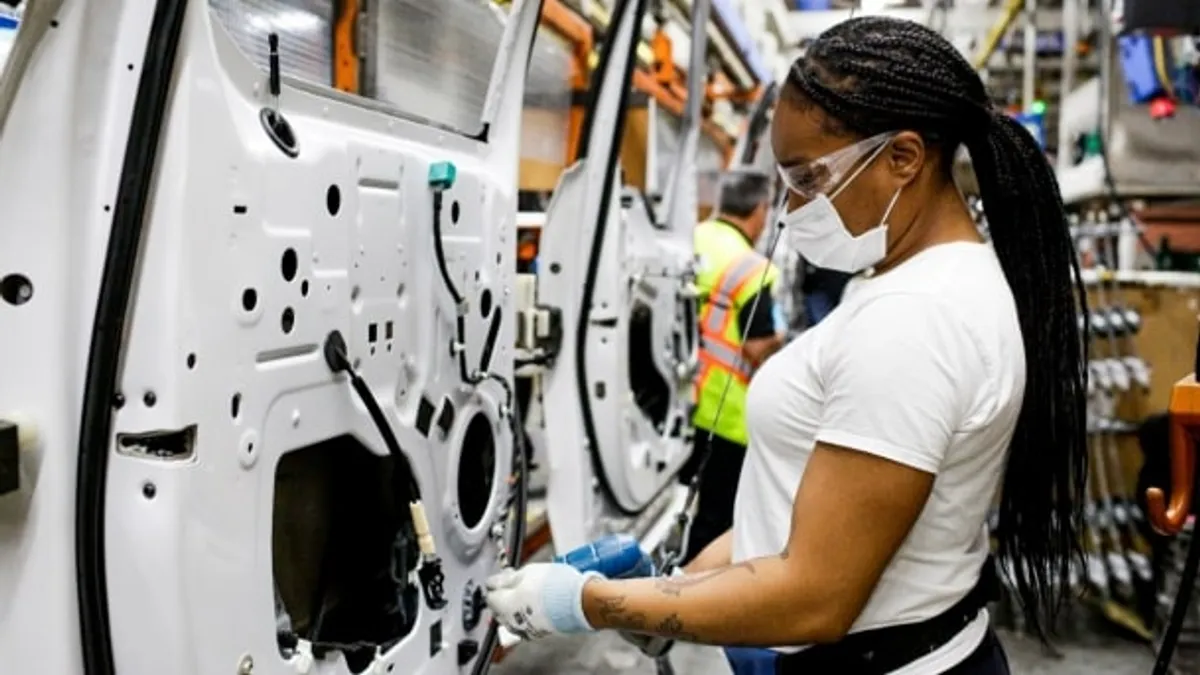Dive Brief:
- The Ford Motor Company aspires to achieve carbon neutrality globally by 2050, according to the company's 21st sustainability report released Wednesday. It is working with Ceres and the Science Based Targets initiative (SBTi) to set scope 1, 2 and 3 environmental goals in line with the Paris Agreement.
- Ford will invest $11.5 billion in its electric vehicle lines through 2022, as well as reducing carbon dioxide production, water use and waste across its facilities and supplier base. These areas are responsible for 95% of the company's current emissions, according to a press release.
- In the interim, Ford has committed to reducing global facility carbon dioxide levels 18% from 2019 to 2023 and switching over to 100% locally sourced renewable energy in its manufacturing plants by 2035.
Dive Insight:
With this commitment, Ford joins the ranks of Amazon, Ikea, Maersk and other firms that have set goals to achieve carbon neutrality within the next 50 years through a combination of electric or alternative fuel use, waste reduction, and cutting emissions across their operations.
However, a significant portion of Ford's plan relies on switching over its vehicle offerings to high fuel economy, hybrid and ultimately zero-emission vehicles. Company executives admit this could be challenging, given the uncertainty driven by the coronavirus pandemic, whereby key components (including sustainably generated electricity) may be more difficult or more expensive to source. Furthermore, a recent study from WoodMac projects global electric vehicle sales could drop 43% in 2020 due to the outbreak and resulting economic recession.
As a result, Ford is still working to define the concrete elements of its sustainability plan.
"We don’t have all the answers yet but are determined to work with all of our global and local partners and stakeholders to get there," Bob Holycross, VP and chief sustainability, environment and safety officer at Ford, said in a statement.
This stakeholder engagement work has included surveying 83% of its supplier base (78% of which responded) to better understand its scope 3 emissions and water usage, according to the report. In addition, it has shared " best practices examples" with 56 key tier one suppliers through the Partnership for A Cleaner Environment (PACE) to reduce their carbon footprint. Suppliers participating in the program are projected to reduce carbon dioxide output by 680,000 metric tons over the next five years, the document states.
Ford is also working to reduce waste and improve the circularity of its materials, eliminating single-use plastics by 2030 and reducing overall waste-to-landfill by 21% (measured in kilograms per unit). Since 2019, the company has been partnering with McDonald's to use coffee chaff, a waste byproduct, to produce certain vehicle parts — reducing the need for petroleum and cutting down the weight of the part, which can contribute to a vehicle's fuel efficiency.
Despite the cost of making these changes, experts at Kearney have found that the coronavirus pandemic has increased consumer demand for sustainable products and the desire for transparency about how they are made. And, as manufacturers work to make their supply chains more resilient to shocks, there is also increasing consideration of how designing them to be more environmentally sustainable as well.














